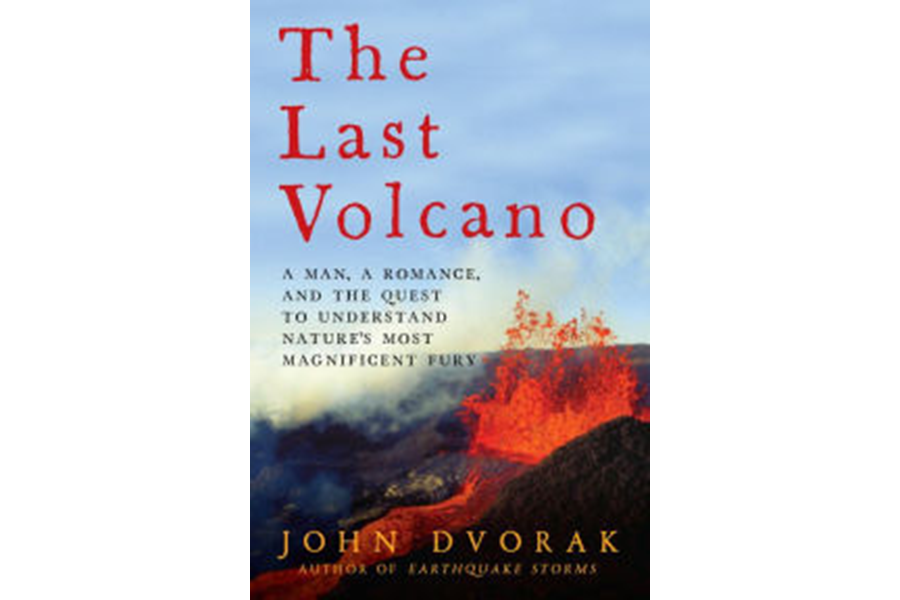'The Last Volcano' is the remarkable story of a forgotten scientific pioneer
Loading...
Bubbling and sloughing under the surface of John Dvorak's terrific new book The Last Volcano: A Man, A Romance, and the Quest to Understand Nature's Most Magnificent Fury is the quietly terrifying reminder that we somehow manage to live on a tectonically active planet. The enormous plates that comprise Earth's surface are constantly pulling away from each other or sliding underneath each other or grinding against each other, and every tear and dimple in the planet's crust presents an opportunity for the superheated subterranean magma to collect near the surface, concentrate, and sometimes erupt. In the long horror-gallery of Earth's climatic disasters, volcanic eruptions are the most viscerally surprising things, often detonating suddenly after years or decades or centuries of slumber.
And unlike all other natural disasters, they can end life on a truly massive scale. The 1991 eruption of Mount Pinatubo in the Philippines killed nearly 1,000 people and hurled millions of tons of magma to the surface. The explosion of the Indonesian island of Krakatoa in 1883, says Dvorak, “sent out a series of audible shocks that were heard across southeastern Asia and northern Australia and far out into the Indian Ocean.” It unleashed tsunamis that killed more than 35,000 people, and its ash-cloud was so vast it lowered the average temperature of the entire planet for years. In AD 79, the eruption of Mount Vesuvius on the Gulf of Naples famously buried the thriving towns of Pompeii and Herculaneum. If the so-called “supervolcano” underneath Yellowstone National Park were to undergo a general eruption, 100,000 people would die, and half the hemisphere would be blanketed in a foot of ash.
At the heart of Dvorak's story is the career of a man who found it intolerable that science should be so collectively complacent about these monsters in its midst. Thomas Jaggar, born in Philadelphia in 1871 and educated at Harvard University, had early on in his career as a volcanologist realized that he would face a choice “between museums and field, between the easy thing of collections, fine microscopes and scientific societies, and the hard thing of exploring the globe.” When Mount Pelee in the Antilles erupted in 1902, destroying the town of St. Pierre, “the Pearl of the Caribbean,” he hurried there with a group of other scientists and was immediately reminded of Pompeii, which he'd visited as a child. The two cities were much alike, Dvorak points out, not least in their abrupt deaths. “Two thousand years separated the two disasters – which made Jaggar wonder: Why hadn't human knowledge advanced enough since Pompeii to prevent a replay of such suffering?”
Much of "The Last Volcano" is the story of Jaggar working to answer that question. It's the remarkable story of a forgotten scientific pioneer, the man who first systematically developed many of the techniques still used today to predict volcanic activity: collecting gas samples, tracking the warning-sign earthquakes, measuring the bulging of the ground and the draining of lakes, and more. In chapter after chapter, he chases after major volcanic eruptions and earthquakes, eventually settling in one of the world's ideal spots for a working volcanologist, Hawaii's Kilauea, an active but comparatively “tame” volcano whose Halema'uma crater could be studied at temptingly close range.
Although still sailing off to tectonic hot-spots as they flared up all over the world, Jaggar eventually settled down to work at the “Volcano House” observatory in Hawaii, and it was in Hawaii, at Hilo, that he met and married his beloved second wife Isabel Maydwell, a widowed schoolteacher (this, and not Jaggar's rather shabby treatment of his first wife Helen, is the “romance” of Dvorak's subtitle). “Every night during their first two years of marriage,” Dvorak writes in a typically evocative detail, “their bedroom was filled with the red light reflected off the clouds that hung over the lava lake.” And it was in Hawaii that Jaggar was able to study first-hand the eruption of Mauna Loa, the world's most active volcano, in 1919, collecting gas samples that our author refers to as “the best ever collected for an eruption of that volcano, even to this day.”
After his retirement in 1940, he and Isabel moved to Honolulu, where he took up a professorship at the University of Hawaii (they watched the bombing of Pearl Harbor the following year). Jaggar wrote a series of essays for the Navy on various informational aspects of his decades of adventures in the field, but as Dvorak reminds his readers throughout this engaging, informative book, his hero's real work was in laying “the foundation of almost every aspect of volcano research today.”
Jaggar died in January of 1953, and every time Kilauea has bubbled and frothed and erupted since then, researchers on site have been indebted to Thomas Jaggar whether they knew it or not. And as for Yellowstone, it's relatively quiet – for the moment.








